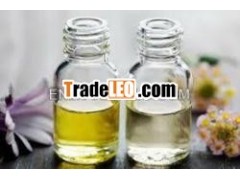Description:
We are leading in Manufacturing Exports & Suppliers of PurePatchouli Oil.1.High Quality
2.Responsible Price
3.No MOQ.
PatchouliOil
Patchouli oil isextracted from Pogostemon cablin (also known as Pogostemonpatchouli) of the Labiatae family and is also known as patchoulyand puchaput.
Although this essential oil may remind people of the hippie era,its value in skincare is incalculable. It is also great forfighting depression and anxiety. It has great diuretic propertiesand also helps break down cellulite, while stimulating theregeneration of skin cells, speeding up healing and preventing uglyscars forming when wounds heal.
Patchouli Oil is obtained by the Steam Distillation of Driedfermented Leaves of Pogostemon Cablin Family. The plant is nativeto tropical regions of Asia and emits an intense, woody,sweet-spicy, balsamic odor. It improves with age and is used as afixative in perfume for centuries. Another major usage of Patchoulioil has been in the tobacco flavoring industry. It is anaphrodisiac and became very popular again in 1960s for thisreason.
In several Asian countries, such asJapan and Malaysia, patchouli is also used as an antidote forvenomous snakebites. It is also used as a scent in products likepaper towels, laundry detergents, and air fresheners. Two importantcomponents of the essential oil are patchoulol andnorpatchoulenol.
Oil properties
Patchouli oil has a rich musky-sweet, strong spicy and herbaceoussmell. It is light yellow to dark brown in color and is a thickoil.
Origin of patchouli oil
It is a perennial, bushy plant that grows up to 1meter (3 feet)high, with a sturdy, hairy stem and large, fragrant, furry leaves,about four inches long and five inches across. It has whitishflowers tinged with purple.
The plant is native to Malaysia and India, where it is known as''puchaput''. The word is derived from Hindustan word ''patch''meaning ''green'' and ''ilai'' meaning ''leaf.''
It was placed between Indian cashmere shawls en route to VictorianEngland, to protect the merchandise from moths, and without thissignature smell of dried patchouli leaves the shawls could not besold in England.
In the East, it is used in potpourris and sachets and place betweenlinen, to keep bedbugs away, and it is the smell of patchouli oil,mixed with that of camphor, that gives Indian ink itscharacteristic smell.
Extraction
Patchouli oil is extracted from the young leaves which are driedand fermented prior to steam distillation and yields 2 - 3 %. Thisoil improves with age to have a fuller, more well rounded odor.
Chemical composition
The chemical components of patchouli oil are b-patchoulene,a-guaiene, caryophyllene, a-patchoulene, seychellene, a-bulnesene,norpatchoulenol, patchouli alcohol and pogostol.
Precautions
It is non-toxic, non-irritant and non-sensitizing, but the smell ofpatchouli oil may be a little persistent for some people and largedoses may cause loss of appetite in some individuals.
Therapeutic properties
The therapeutic properties of patchouli oil are antidepressant,antiphlogistic, antiseptic, aphrodisiac, astringent, cicatrisant,cytophylactic, deodorant, diuretic, febrifuge, fungicide,insecticide, sedative and tonic.
Uses
Patchouli oil has a grounding and balancing effect on the emotionsand banishes lethargy, while sharpening the wits, fightingdepression and anxiety. It is also said to create an amorousatmosphere.
It is effective for fungal and bacterial infection and is of greathelp for insect bites. It could also be used as an insect repellantand is also used as a support for dealing with any substanceaddiction.
With its excellent diuretic properties, it is effective in fightingwater retention and to break up cellulite, easing constipation andhelping to reduce overweight.
Furthermore, it has a great deodorizing action, and helps whenfeeling hot and bothered, while cooling down inflammations andassisting with wound healing.
On the skin, this oil is one of the most active and is a superbtissue regenerator, which helps to stimulate the growth of new skincells. In wound healing, it not only promotes faster healing, butalso helps to prevent ugly scarring when the wound heals.
Patchouli oil is very effective in sorting out rough, cracked andoverly dehydrated skin and is used to treat acne, acne, eczema,sores, ulcers, any fungal infections, as well as scalpdisorders.
Summary
Patchouli oil has a beneficial effect on the skin, helps forinfections and insect bites, water retention and can help withstress related problems and addictions.
- Burners and vaporizers
- In vapor therapy, patchouli oil can be used to fight anxiety anddepression, while at the same time creating a very amorousatmosphere and acting as an insect repellent.
- Blended massage oil or in the bath
- As a blended massage oil or diluted in the bath, patchouli oil canhelp to fight depression, skin and scalp complaints, fungalinfections, fluid retention, help to break down cellulite and alsoassists with constipation, overweight and dermatitis.
- Neat
- Patchouli oil can be applied neat with a cotton bud on insectbites.
- Lotions and creams
- In a lotion or cream, patchouli oil can be used for general skincare, as it has superb tissue regenerating properties, to helprejuvenate the skin and stimulate the formation of new skin cells,while fighting infections. It also speeds up healing, whilepreventing the wound forming ugly scars and is effective for acne,eczema, weeping sores, ulcers, slow healing wounds, scalpdisorders, as well as other fungal infections, such as athlete''sfoot.
Patchouli oil blends well with
Although essential oils blend well with one another, patchouli oilblends particularly well with bergamot, clary sage, geranium, lavender and myrrh.
Bulk Patchouli Oil








